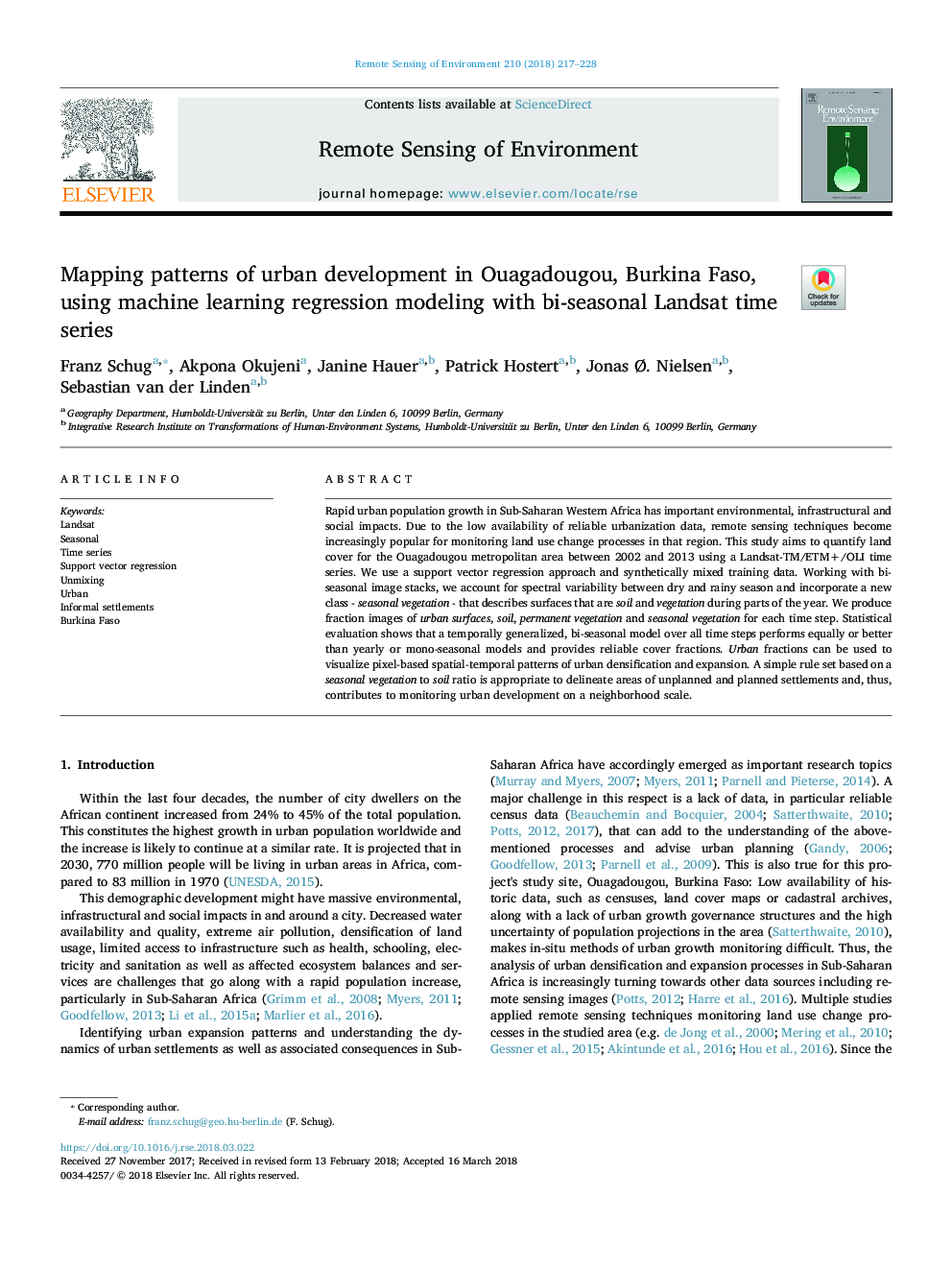| Article ID | Journal | Published Year | Pages | File Type |
|---|---|---|---|---|
| 8866597 | Remote Sensing of Environment | 2018 | 12 Pages |
Abstract
Rapid urban population growth in Sub-Saharan Western Africa has important environmental, infrastructural and social impacts. Due to the low availability of reliable urbanization data, remote sensing techniques become increasingly popular for monitoring land use change processes in that region. This study aims to quantify land cover for the Ouagadougou metropolitan area between 2002 and 2013 using a Landsat-TM/ETM+/OLI time series. We use a support vector regression approach and synthetically mixed training data. Working with bi-seasonal image stacks, we account for spectral variability between dry and rainy season and incorporate a new class - seasonal vegetation - that describes surfaces that are soil and vegetation during parts of the year. We produce fraction images of urban surfaces, soil, permanent vegetation and seasonal vegetation for each time step. Statistical evaluation shows that a temporally generalized, bi-seasonal model over all time steps performs equally or better than yearly or mono-seasonal models and provides reliable cover fractions. Urban fractions can be used to visualize pixel-based spatial-temporal patterns of urban densification and expansion. A simple rule set based on a seasonal vegetation to soil ratio is appropriate to delineate areas of unplanned and planned settlements and, thus, contributes to monitoring urban development on a neighborhood scale.
Keywords
Related Topics
Physical Sciences and Engineering
Earth and Planetary Sciences
Computers in Earth Sciences
Authors
Franz Schug, Akpona Okujeni, Janine Hauer, Patrick Hostert, Jonas Ã. Nielsen, Sebastian van der Linden,
